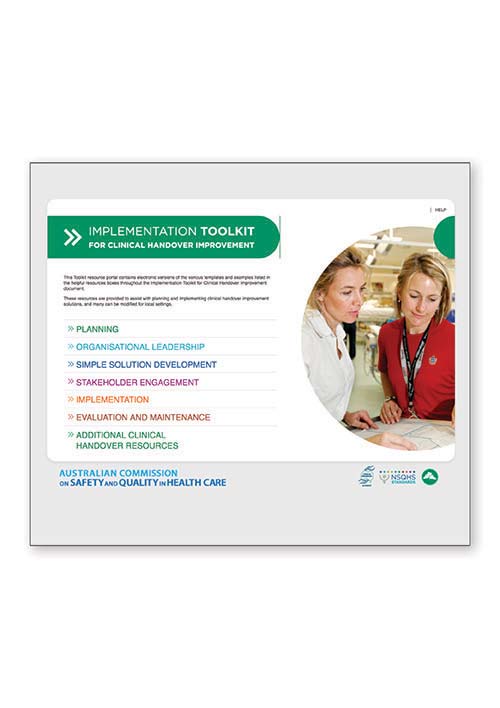
Communicating at transitions of care
Transitions of care occur when all or part of a patient’s care is transferred between healthcare providers, locations or different levels of care within the same location, as the patient’s conditions and care needs change.
Situations can include when:
- There is a change in provider (e.g. shift change)
- A patient is transferred to another service
- A patient is moved within a health service
- A patient’s care is discussed during multidisciplinary team rounds
- A patient transfers for a test or appointment
- A patient is admitted to, or discharged from a health service.
Key messages
Communication strategies
Why is it important?
Australia’s health system is complex and the delivery of health care involves a large network of interacting services and providers, across multiple settings. This can include public and private health, preventative services in the community, primary health care, emergency services, hospital-based services, rehabilitation and palliative care.
It is therefore common for a person to access multiple healthcare services; have a number of different healthcare providers involved in their care; and have their care transferred between different providers and services. When all or part of a person’s care is transferred, there is a transition of care.
At transitions of care, the risk of communication errors is increased. Ineffective communication between clinicians, multidisciplinary teams and with the patient and their family or carer can lead to poor health outcomes, patient distress and inappropriate care.
Patients who have a higher risk of communication errors at transitions of care
At transitions of care, it is important to consider the specific circumstances of your patient and identify if there are any risks or additional needs associated with a transfer of care. This may include the need for social care when they leave a service; help with mobility issues; access to an interpreter; or access to safe transportation.
In these cases it will be important to know what additional information needs to be communicated and documented to ensure safe and continuous care for your patient.
The following list identifies people who may be at a higher risk of harm when all or part of their care is transferred. A patient may fit into more than one of the categories below.
- Aboriginal and Torres Strait Islander people
- Older people
- People with a disability, cognitive impairment and/or physical impairment
- People with dementia and/or delirium
- People from rural or remote areas
- People who are homeless
- Cultural and Linguistically Diverse people
- People who have a mental illness
- People undergoing surgery
- Children
- People that require palliative care
- People who are admitted to intensive care
- People with multiple co-morbidities.
Recommendations about what common information elements should be available to clinicians to support effective communication at transitions of care for patients with complex healthcare needs can be found in:
Rapid review on Improving documentation at transitions of care for complex patients.








